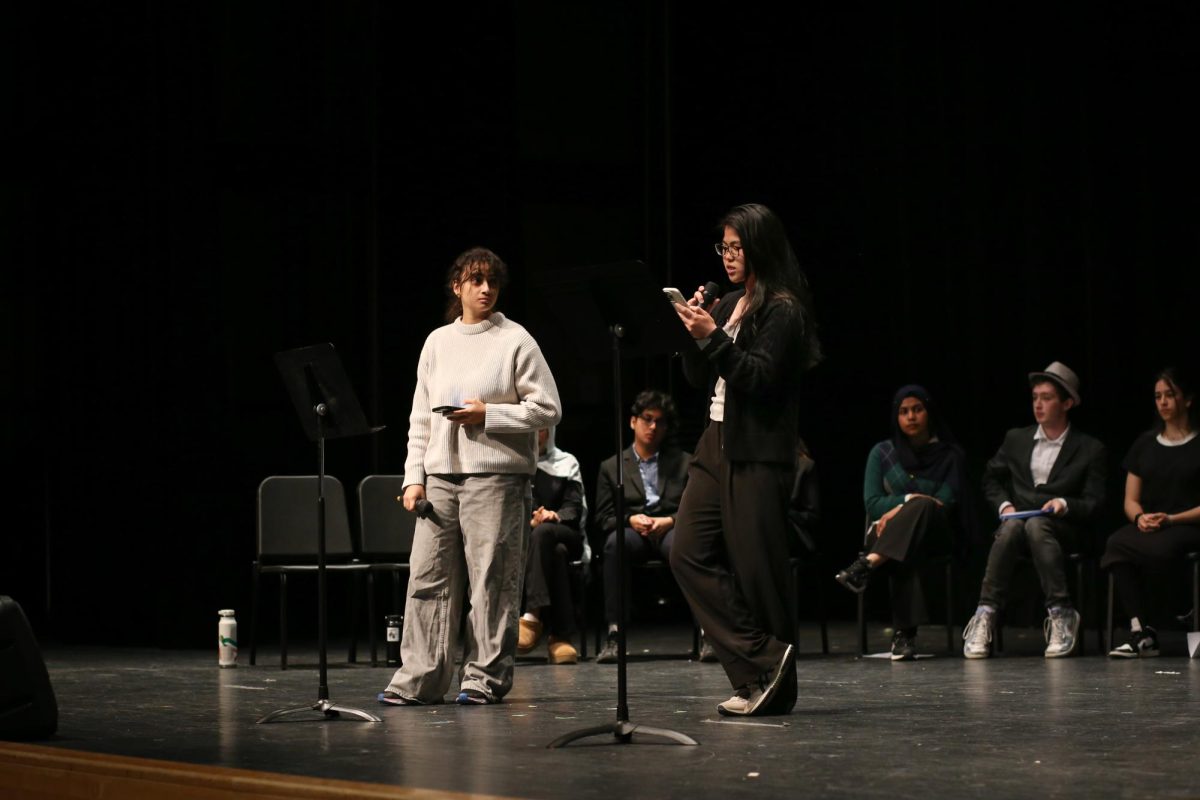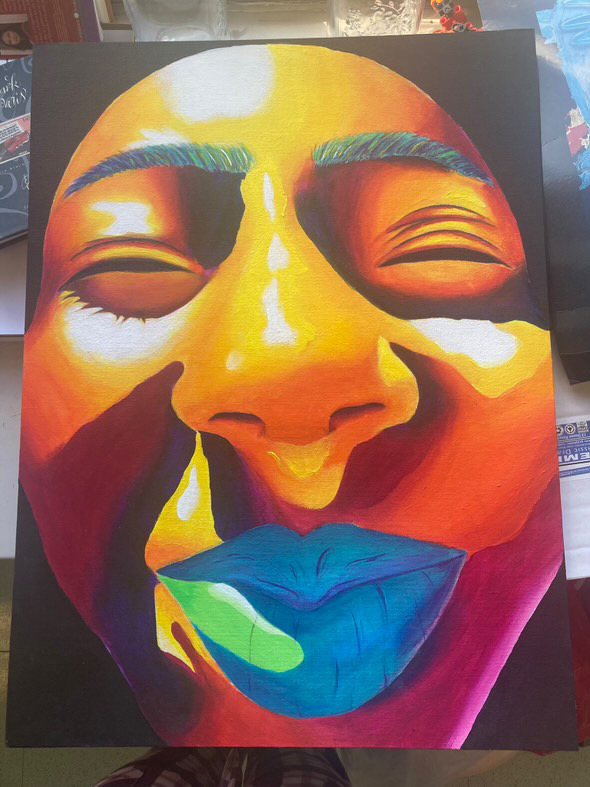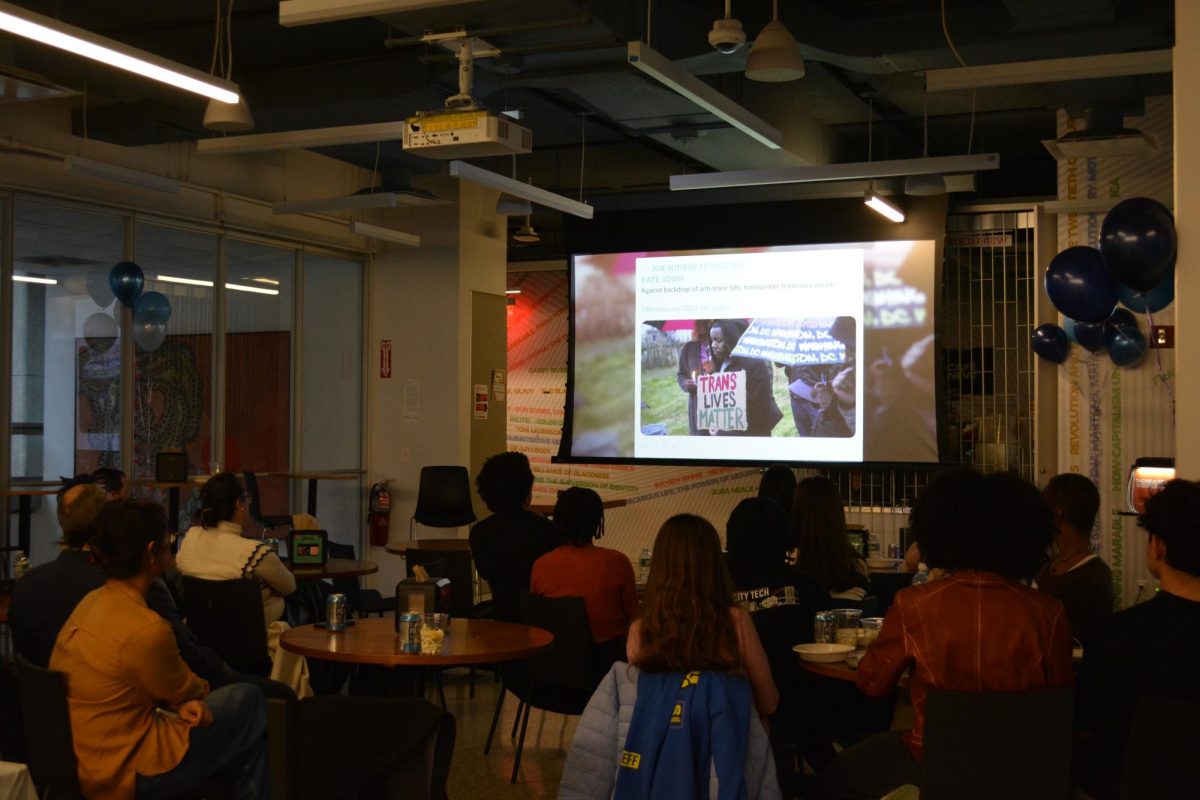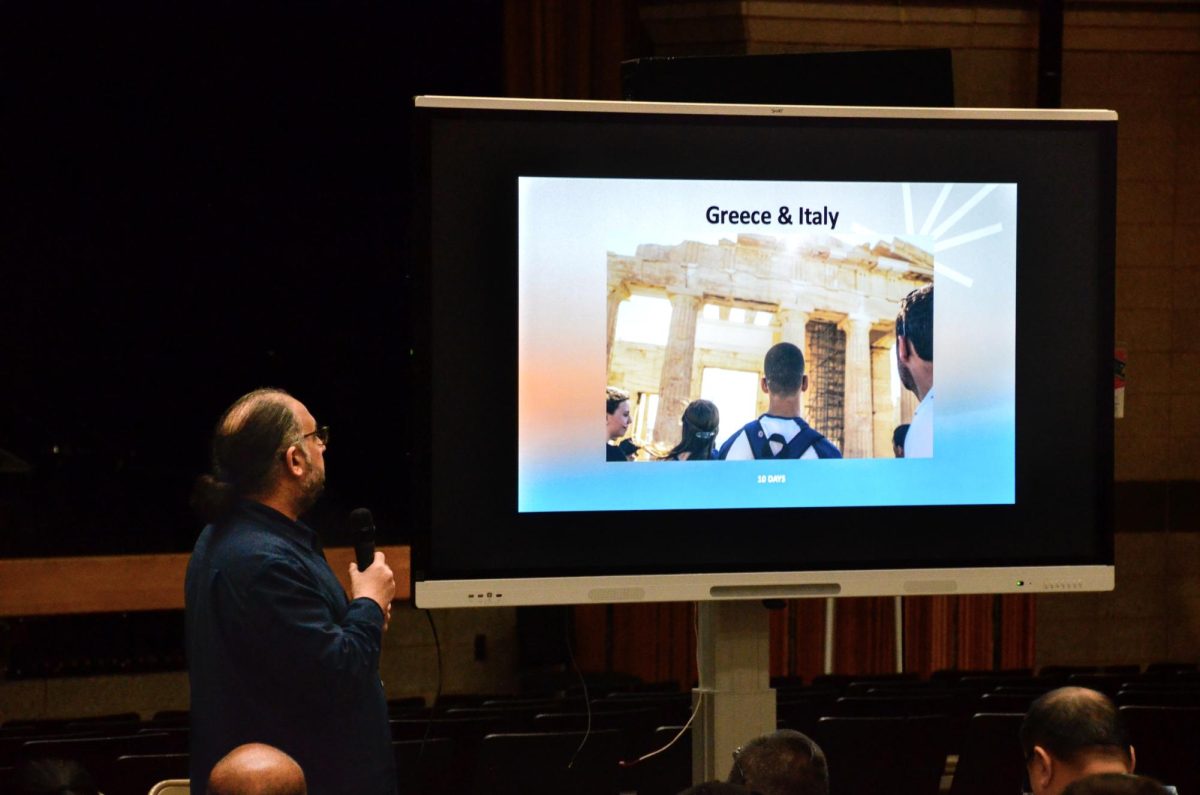
The 2014 Election Simulation has come to an end with a near Democratic sweep. Out of the ten positions up for election, Democratic candidates won eight.
For the positions of Governor and Lieutenant Governor, Democratic candidates Andrew Cuomo and Kathy Hochul beat their respective Republican opposers, Robert Astorino and Christopher Moss.
Senior Igor Portnoy, who played Andrew Cuomo, was surprised by the breadth of his margin of victory, stating, “Astorino was catching up to me from preliminary polls and I thought it would be close to a 60-40 race.”
Governor Cuomo’s opposing candidate Robert Astorino, played by senior Russell Katz, was unsurprised by the results. He claimed that it was an uphill battle from the beginning.
“We live in a Democratic state and therefore, Cuomo had a 3.5 times larger budget in the simulation,” Russell said. He also mentioned that he and Christopher Moss, played by senior Marek Kozaka, were at a disadvantage due to the late start they had in their campaigns.
Comptroller Thomas DiNapoli, Attorney General Eric Schneiderman, District 7 Congresswoman Nydia Velazquez, and District 41 State Assemblywoman Helene Weinstein also won by a majority.
One of the more surprising wins was that of Democratic candidate Eric Schneiderman over Republican John Cahill.
“I think [my victory] was not due to people seeing me on TV or on a poster in the hallway,” stated senior Rahul Chandra, who played Eric Schneiderman. “I think it was more that they saw me in person and in classroom visits.”
Press secretary for Cahill’s campaign and senior Monisha Afrooz cited one of the main causes of their loss as identifying as a Republican. “I wished we had reached out to more freshmen because I feel that even though we reached out to them in the beginning, when it was time to actually vote, they seemed to forget everything and they just voted for the democrats.”
Monisha went on to say that she wished “the party of each candidate hadn’t been designated [on the polls], because that seemed to influence the votes of the underclassmen more than the candidates themselves.” She believed that if “the underclassmen hadn’t known the party each candidate belonged to, the results may have turned out differently.”
Junior Olivia Chan for the most part wasn’t surprised by the overall results of the simulation; however, she believed that Cahill should’ve won “because he really seemed to care about his campaign, especially during his classroom visits.”
The two Republican candidates that actually snatched victory were District 15 Senator Michael Conigliaro and Congressman for District 12 Nick Di Iorio.
Michael Conigliaro, played by senior Neil Chen, had a sweeping victory despite being Republican, with a 47.2% margin over Democrat Joe Addabbo. Neil said, “Winning the Election Simulation wasn’t necessarily more exciting than participating in it… My campaign sought a balance between being informative and being publicized, as real campaigns do. As far as Republicans being at a slight disadvantage: that’s all part of the simulation.”
Meanwhile, the margins were also close for the Congressional District 12, State Assembly District 55, and Congressional District 14’s race. Republican candidate Nick Di Iorio won by a 16.6% margin, Democratic candidate Latrice Walker won by a narrow 3.4% difference, and Democratic candidate Joe Crowley won by an 11.2% margin.
Like Rahul, Dimitri Perdik, who played Republican Nick Di Iorio, attributed his success to the numerous classroom visits and multiple relatable commercial showings.
Republican candidate Elizabeth Perri, played by senior Gabriela Zygadlo, shared similar thoughts on her close loss for the Congressional District 14 race. “I thought that we would have a greater chance at winning but unfortunately, most of New York is Democratic so we didn’t have much of a chance.”
The near Democratic sweep in the THHS midterm Election Simulation did not surprise social studies teacher Mr. Wood, who is in charge of the TV and radio show Hawk it Out, and social studies teacher Jamie Baranoff, who is in charge of the candidacy classes.
Mr. Wood explained, “We’re in a blue state with a lot of people who are naturally inclined to be Democrats.” He did not see any major difference in the efforts put out by each party, having encouraged the TV and radio shows to portray a balanced representation of both parties.
“I think the Democrats did a really great job this year. I thought one race was really close and it was heartbreaking for the person who lost,” stated Mrs. Baranoff.
Notably, this year, more freshmen voted in the Election Simulation than ever before. Social Studies teacher Linda Steinmann noted, “The freshmen turned out in record numbers. 200 freshmen voted, which was pretty awesome considering that they are the least involved in the Election Simulation.”
Thomas DiNapoli, played by senior Brian King, hoped the freshmen voters would emulate their active participation in the real world. He stated, “I’m pretty happy that [the freshmen] got their opinions out and are pretty confident in voting. Hopefully, when they get to the age to vote, they’ll actually vote, unlike people who didn’t vote in the Election Simulation.”
Students expressed mixed feelings about the Democratic sweep in the THHS election simulation. Freshman Jamie Rosen was elated that many voted for the Democratic candidates because she felt they were better prepared during their classroom visits “as opposed to talking down the opposing campaign which was what [she] found in a lot of the Republican candidates.”
Freshman Ashley An said a lot of factors contributed to her decision to vote such as the TV show, Hawk it Out, the radio show, and classroom visits. But ultimately, bake sales were a deal breaker for her.
Underclassmen agreed that classroom visits were especially effective since they informed them about the candidates’ views and thus gave them the confidence to vote.
Sophomore Brianna Manginelli was very impressed to see how well-informed candidates were during the classroom visits, and found it enriching to hear the differing viewpoints on issues using a direct approach.


























